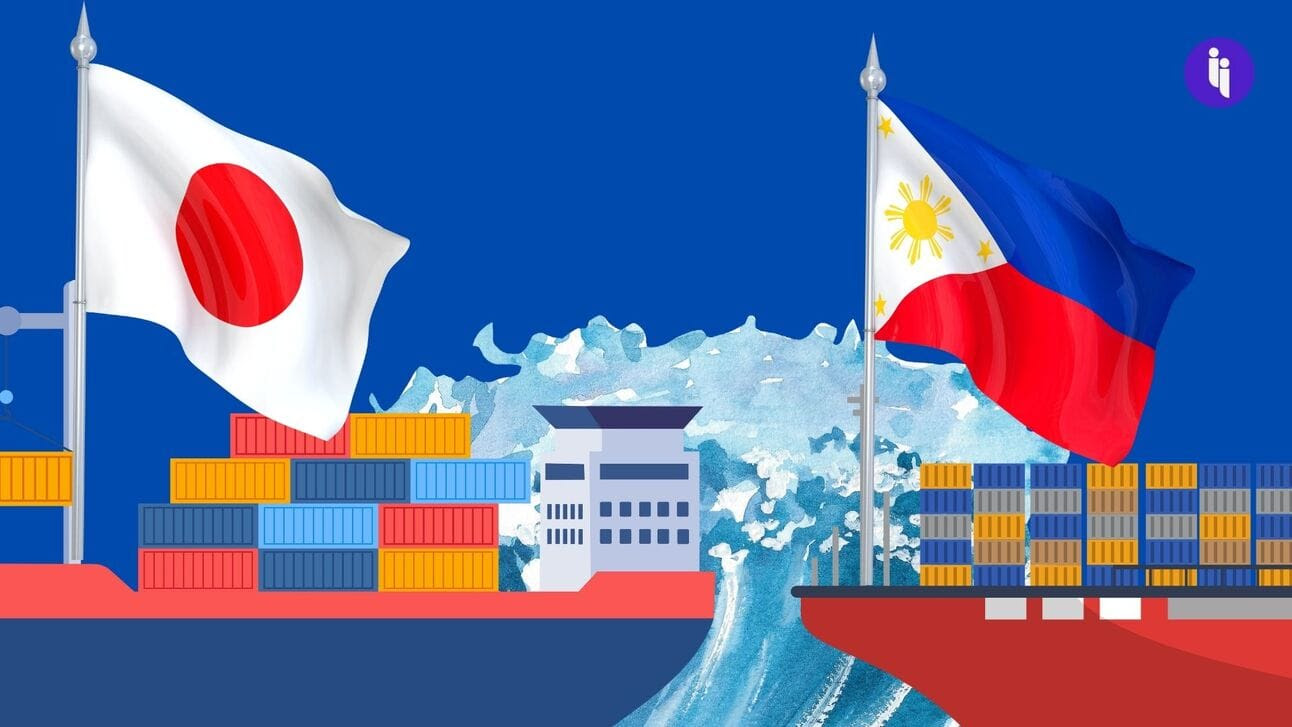While many of us perhaps kicked off our week with a nice little trip down to Home Depot or a surprisingly productive sync with Barry from sales, ministers from Japan and the Philippines used their Monday to sign a major defence treaty in Manila’s Malacañan Palace: it’s called a ‘Reciprocal Access Agreement’.
And we’ve dug through the 31-page document so you don’t have to. The treaty:
- Allows Philippine troops to deploy to Japan (and vice versa) for “cooperative activities”
- Signs both countries up for joint combat exercises, and
Lets them wear each other’s uniforms.
The two kicked off formal negotiations last November in Tokyo, dropped hints of progress at this year’s Shangri-La Dialogue in Singapore, then did a formal line-by-line reading on June 11th (virtually, of course, because it’s 2024).
Stay on top of your world from inside your inbox.
Subscribe for free today and receive way much more insights.
Trusted by 114,000+ subscribers
No spam. No noise. Unsubscribe any time.
And that’s remarkably quick for these types of negotiations. Why the rush?
Both countries are worried about China:
- Beijing claims 90% of the South China Sea, shrugging off an international ruling against it, not to mention rival claims by several more proximate countries like the Philippines (which brought the suit).
- Japan also has its own territorial dispute with China (the Senkakus), plus broader jitters both about China’s assertiveness, and its designs over waterways that carry (for example) 80% of Tokyo’s energy imports.
As for China, it bases its claims on “historic rights” (a concept rejected by the above court), but President Xi’s interests are likely broader. He sees value in:
- Controlling maritime trade routes that are vital to China’s economy
- Managing the area’s vast fishing and energy resources
- Expanding China’s sense of security by pacifying its periphery, and
- Testing US commitment to its allies like the Philippines.
So against that backdrop, this Japan-Philippines treaty is a BFD.
For Manila, it comes amid what President Marcos Jr called China’s “illegal, coercive, aggressive and deceptive actions”, which culminated in last month’s footage of sailors ramming and threatening Philippine resupply ships with axes.
So Marcos will be hoping that the presence – of even possibility – of Japanese troops nearby will add to existing efforts at encouraging China to back off.
As for Tokyo, the benefits are similar: the deal further stitches Japan into the US-led ‘latticework’ of countries seeking to balance China.
It probably also helps Japan manage its own grim legacy in the region, including its WWII occupation of the Philippines. So this pact is a bit of a friendship bracelet, eight decades later.
But China, which has its own history of occupation by Japan, is still only too happy to refresh everyone’s memories. Responding to yesterday’s treaty signing, Beijing’s foreign ministry said “Japan bears serious historical responsibilities for its aggression and colonial rule over the Philippines and other Southeast Asian countries during WWII.”
The ministry went on to add that “the Asia-Pacific region does not need any military bloc, still less groupings that incite bloc confrontation or a new Cold War.”
INTRIGUE’S TAKE
That last line gets to the heart of it: what the US describes as a “latticework” of countries responding to China’s behaviour, Beijing prefers to label as “blocs” or “cliques” seeking to “instigate a new cold war”.
Diplomats love their jargon, but the idea behind a ‘latticework’ is that it goes beyond the region’s traditional ‘hub and spokes’ model, which long saw individual countries forge defence ties with the US (not with each other).
Rather, this emerging ‘latticework‘ means more US partners are now forging ties among themselves: the Quad, AUKUS, the first-ever Japan-Korea-US and Japan-Philippines-US summits, and various reciprocal access agreements with Japan, the Philippines, and others.
That’s all just in the last few years (!), and often involves doing the once unthinkable: whether that’s the US sharing its nuclear propulsion secrets (AUKUS), India joining a US-aligned security dialogue (the Quad), or Korea and the Philippines finding a way to trust their former occupiers again (Japan).
The result, in theory at least, is a more diversified, more integrated, and more resilient “latticework” of countries, better able to withstand the sense of inevitability and asymmetry they get when facing China one-on-one.
The result is also, of course, Beijing’s displeasure at each new addition.
Also worth noting:
- The Philippines is in defence talks with France and Canada too.








